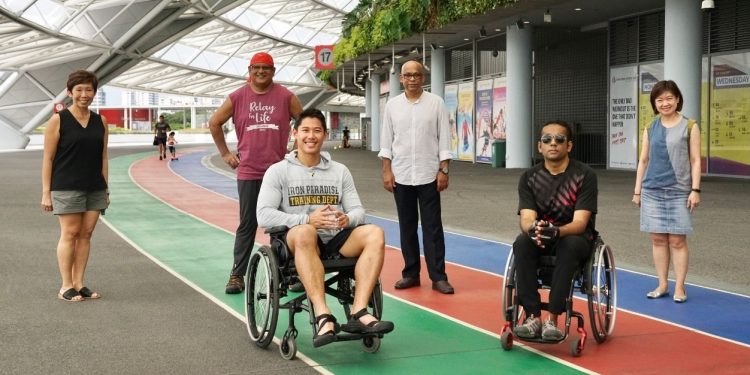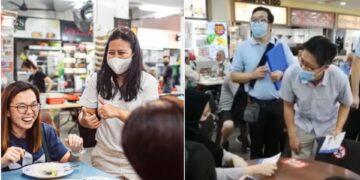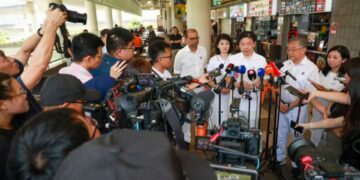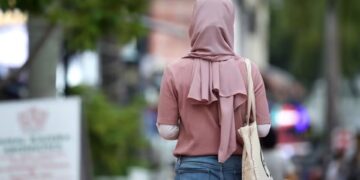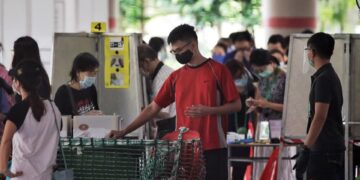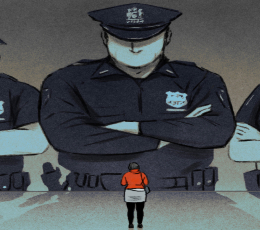Fathima Zohra, 24, was beyond excited to be a part of the 72km C2C Trail Wheelchair Trek Across Singapore For Charity. She recalls the first training with the team; it was a balmy day, though soon enough, the sun was out in full force.
“When we started training, I was doing really well,” she recounts. But things soon took a turn for the worse.
“Because the weather was too hot, I got an AD attack [autonomic dysreflexia],” she shares. Autonomic dysreflexia is a medical condition that can occur in individuals with a spinal cord injury. It is a life-threatening condition that can lead to a stroke, seizure or cardiac arrest.
“It was terrible. I could not complete my training because the attack was so bad that I had to immediately get in [an air-conditioned environment] to cool off, so I don’t pass out,” she said.
This is just one of the challenges that Ms Fathima has to overcome in order to take part in the expedition. Ms Fathima had been at the peak of her youth when she met with a devastating car accident that severed her spinal cord at C6 and C7. At just 20 years old, she became a quadraplegic.
It was a challenging time, to say the least: “In the beginning, I didn’t have the will to live. I wanted to give up… What’s the point of living when I’ve lost my body, and no one’s looking at me the same way. No one’s treating me the same way. I was thinking, if this is how people are going to treat me, I don’t want to have to live the rest of my life like this. I was super suicidal.”
Eventually, Ms Fathima realised that if she wanted to survive her injury, she needed to get help for her mental health. She went to see a professional, and was diagnosed with bipolar disorder and clinical depression.
Since then, Ms Fathima has started to see a difference in her physical recovery as she became more motivated to get better. “It’s important to not just spread awareness about disabilities, but also mental health,” she stresses. “[They] always work together and people need to be more open to accepting that.”
“Mental health is so important for me to talk about, because so many of us are struggling and not willing to get help. In that process, we lose ourselves, or think we can never be anything. If I had given up mentally after my injury, I would not be where I am today. ”
Four years on, she says, “It’s been one hell of a journey.”
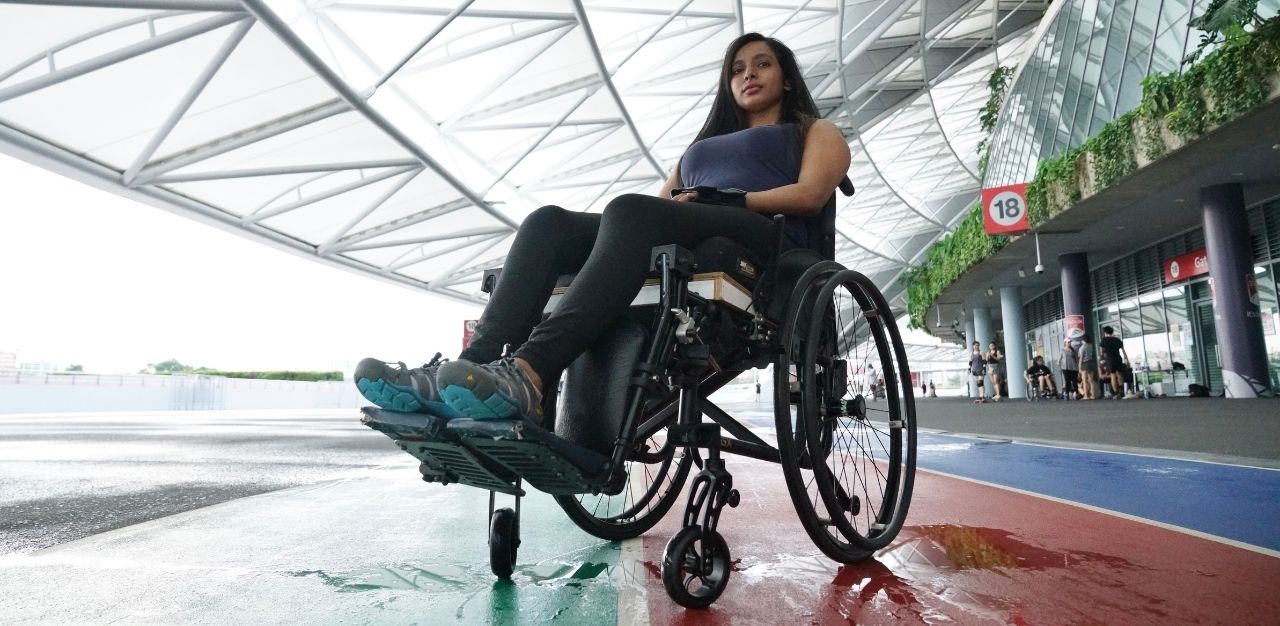
“With my injury, it’s very complicated. Everyone assumes it’s just not being able to walk. But for me, it’s not being able to regulate temperature, and any tiny inconvenience could cause a drop in blood pressure,” she explains. Besides difficulties in regulating body temperature, Ms Fathima also suffers from reduced breathing capacity and chronic nerve pain, where her body feels like “there’s pins and needles 24/7, and it feels like she is lit up on fire”.
Still, Ms Fathima is determined to press on and looks forward to “wheeling [herself] as far as [she] can” in the upcoming trek, in the hopes of raising awareness for persons with disability, and contributing to the charity that had helped her in her own rehabilitation journey: SPD, a non-profit supporting individuals with physical, sensory, and developmental disabilities.
Such is the goal of the 72km C2C Trail Wheelchair Trek Across Singapore, organised by the founder of travel adventure company Beyond Expeditions, Scott Tay. The idea for this trek was first sown when Mr Tay reconnected with a friend, Mansor Ali, and heard his story.
The story of Mansor Ali
Mr Mansor is one of 100,000 individuals struck with a rare disease called idiopathic intracranial hypertension. The condition, which has no known cause or cure, left him in the hospital for three and a half months, in a brief state of coma, and without sight for the rest of his life.
“The doctors told me when I was admitted to the hospital… that their priority was to save my life, and my vision was a secondary priority. I was devastated,” he says.
Only 25 at the time of diagnosis, Mr Mansor had no good options: “I didn’t want to die, I’m so young. At the same time, I didn’t want to lose my vision.”
While doctors managed to save his life, the same cannot be said for his sight. Upon being discharged, Mr Mansor was still in a weakened state. It took him a couple of months to fully process that he had become blind.
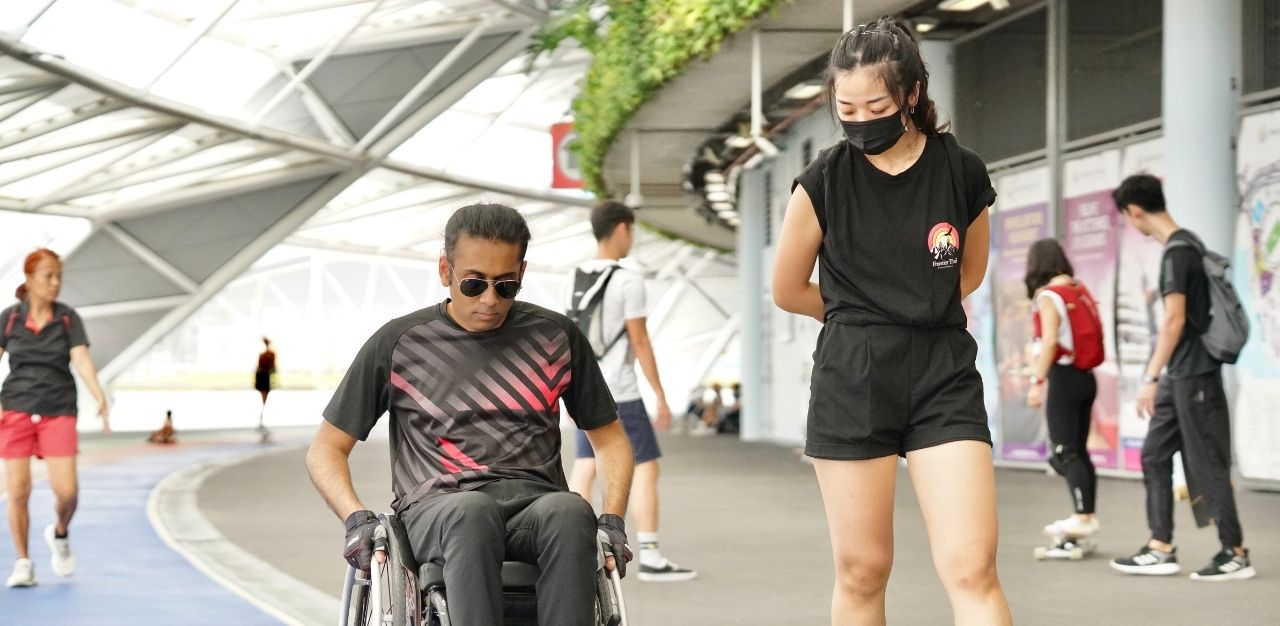
Then came depression.
“For a very long time, I was severely depressed and suicidal. I didn’t want to leave my room or my bed. I’d be on my bed twenty-four seven, and only go out to eat or use the washroom,” he shares. “I wouldn’t want to talk to people or meet my friends. I just wanted to be alone.”
“My mind was thinking of ways to end my life, I didn’t want to be on this Earth anymore… I thought I was doomed and it was the end of it,” he adds.
This went on for more than a year, until Mr Mansor chanced upon the story of Christine Ha, a blind home cook whose story inspired America. In spite of her blindness, she would go on to win the third season of Masterchef in America, as its first blind contestant.
“That story really inspired me… it gave me the assurance that even if I’m blind, I can still do wonderful things,” he says. This marked the turning point in his journey.
Today, Mr Mansor has adapted well to life without sight. Through the aid of devices like computers and smartphones, he is able to lead a relatively normal life, and even return to working in the creative and marketing field, which he had been in prior to losing his vision.
Mr Mansor’s resilience became a source of inspiration for Mr Tay: “I was amazed by his tone and energy. It’s incredible for someone to lose their vision at the age of 25 and still be able to smile and joke around.”
Having organised multiple charity-adventure hybrid events overseas in the past, Mr Tay was already on the lookout for a cause to support during travel restrictions due to the pandemic. Reconnecting with Mr Mansor gave him the inspiration he needed.
Inception of the 72km Wheelchair Trek Across Singapore for Charity
“When we [organise] a fundraising expedition or campaign, the story has to be strong and compelling,” says Mr Tay. “If it’s easy and simple, nobody wants to continue to read more about it.”
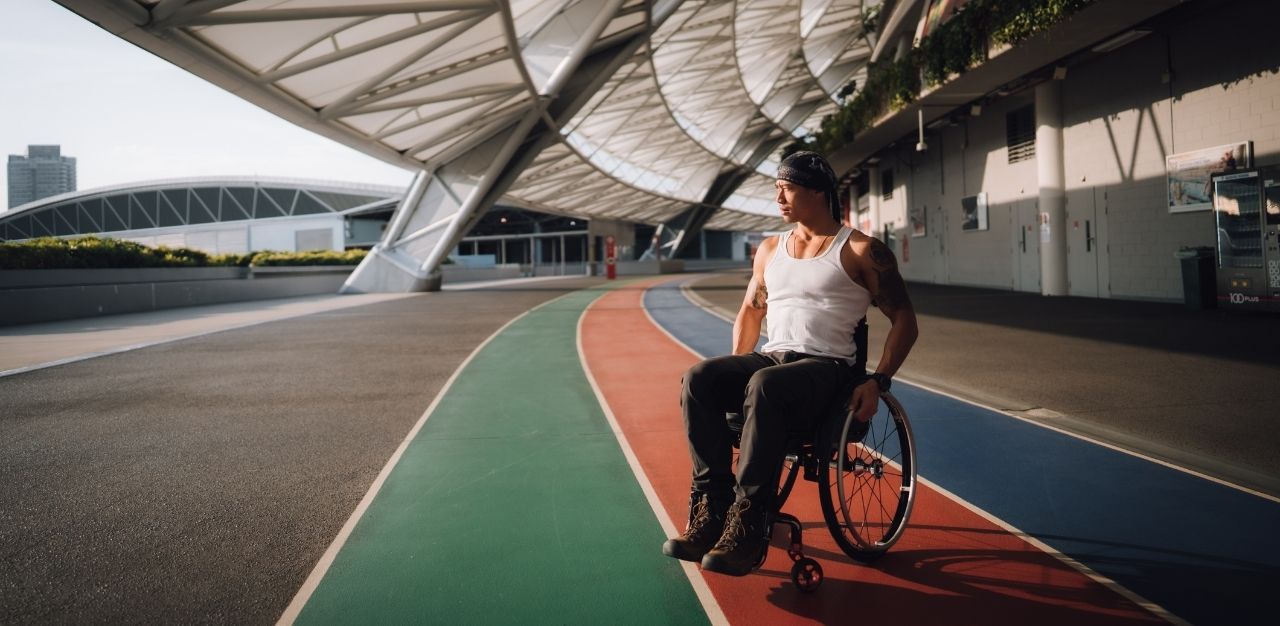
Previously, Mr Tay had led groups to Mongolia to much success. In 2018, his first group expedition trekking the Gobi Desert in Mongolia raised S$72,000 for charity. 2019 saw similar success, where he helmed an expedition to brave the frigid winter of Mongolia, and raised almost S$40,000 trekking in negative 40 degree Celsius weather. But with outbound travel off the cards due to the pandemic, Mr Tay had to find a compelling story and cause within the borders of Singapore.
“When I met Mansor, I learned more about disabilities and inclusivity. I thought, how can we switch things up,” Mr Tay says. “[So,] why not do a wheelchair trek? And not just coast-to-coast, but coast-to-coast, and back, so that makes it 72 kilometres.”
He hopes that the sheer scale of the expedition will pique people’s interest and encourage them to find out more about the campaign. “They read the story, get inspired… and want to support the cause by donating money for those who really need it,” he says.
Mr Tay admits that the 72km journey the group is embarking on cannot match up to the experiences of persons living with disabilities. Rather, his hopes are that this campaign will shine the spotlight on people like Mr Mansor and Ms Fathima.
“[I want to bring together] people who want to share their story, who are advocates, and who want to help others out there with [disabilities], to let them know that we are always on this journey together, [that they are] not alone,” he says.
For the 72km Coast-to-Coast Trail Wheelchair Trek, Mr Tay has brought together eight individuals from different walks of life. From mental health advocates and cancer warriors to accident survivors, each of these individuals bring to the table their own stories of struggle, of overcoming obstacles and triumph – all to raise awareness for persons with disabilities, and promote a more inclusive society.
The creation of a more inclusive society
By taking part in this expedition, 27-year-old Mr Mansor hopes to create a more inclusive environment in Singapore.
He says: “Singapore still has miles to go in terms of inclusiveness as compared to the United States, Australia, and the UK. I hope the people of Singapore will be less stereotypical of the capabilities of persons with disabilities.”
He cites the example of those who are visually handicapped: “There are a lot of things that blind people can do, we just cannot see. A lot of [us] can still use a computer and a phone.”
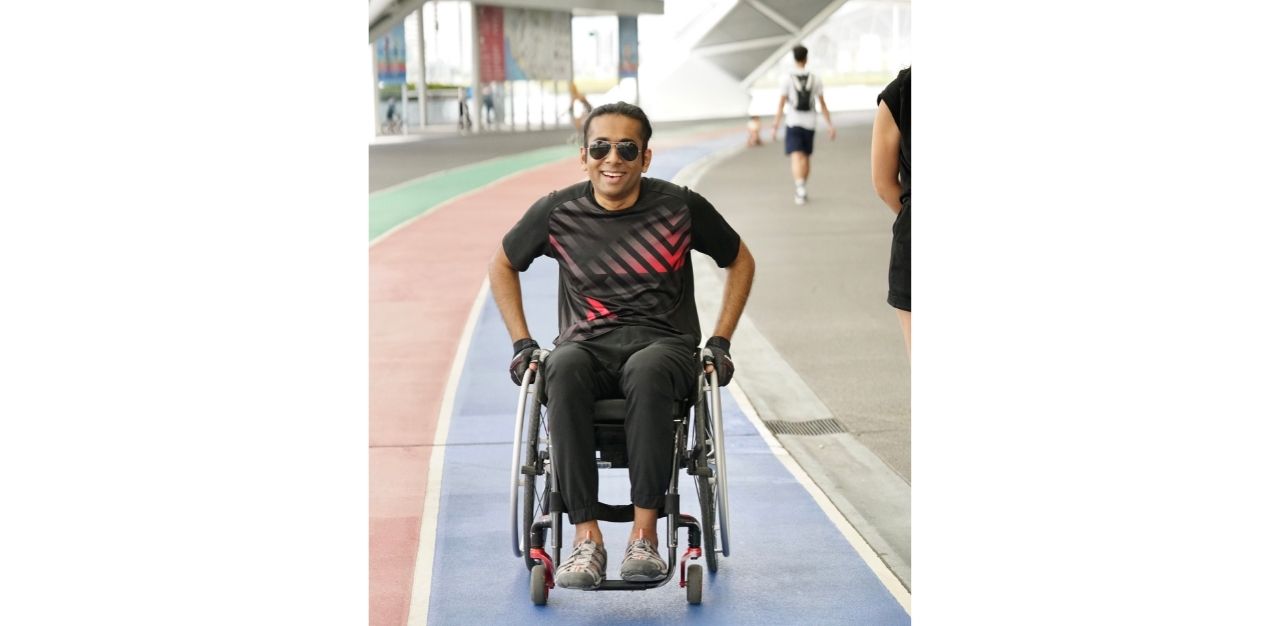
“However, people in Singapore are still very averse to the idea of hiring persons with disabilities just because they have disabilities. They have second thoughts about how the individual is going to execute [their] work,” he rues.
“I won’t say that persons with disabilities are all fantastic… We are still human beings. But with the right guidance and coaching, I’m sure we can excel in whatever we do.”
For Ms Fathima, taking part in the expedition was a given: “SPD has done a lot for me, so I really wanted to give back… because they are genuinely helping so many people with disabilities.”
She adds: “Living with a disability now for four years, I understand how expensive it is to survive this. Therapy sessions, wheelchairs, and customisations are so expensive… Raising money for a place like SPD will do so much good for these people.”
Besides giving back to a good cause, taking part in this expedition also has a hidden perk for Ms Fathima – it allows her to satisfy her inner fitness junkie, a part of her she thought was lost after her accident: “Fitness and being active… was something that defined who I was as a person. When I had the injury, for the first year and a half or more, I was stuck in one place, not being able to move or do anything. This injury took away something that literally defined me.”
“I was able-bodied for 20 years, and suddenly, I had to be on a wheelchair. It was so confusing for me. I had to relearn how to live,” she adds.
Four years later, she still struggles at times: “Even now, I’m still grieving the loss of my body… August [the month of her accident] is a very sensitive month. All the memories [come back], it’s like it is happening all over again.”
In spite of the difficult month, she has managed to find joy and purpose while preparing for this expedition.
She says: “I’ve come a long way. I have suffered a lot, but training and being able to help other people with disabilities was what I was made for. I found my real purpose… Even though this month is so traumatic, the fact that I’m able to do something good made me feel good.”
Lessons learned in preparation for the trail
Ms Fathima is also heartened by the team, who have willingly come together for this cause: “It’s encouraging and motivating to see [that] so many people want to be an ally and want to understand what I go through on a daily basis. It’s a win for the disabled community, because society is willing to understand what we’re going through.”
“It makes me want to do more. If society is willing to do this for us, I should be doing more for my community… I hope society is encouraged and inspired by this, and want to make a difference in their own life.”
She urges the public to hold space for the disabled community, and “not leave [them] behind when wanting to give back”.
“I don’t want people to donate because of pity, but to understand that it’s difficult to survive a disability, and encourage us more,” she emphasises. “I hope that by doing [this expedition], they understand that disabled people are putting themselves out there to spread awareness and are willing to live life just like able-bodied people, so start treating us the same way.”
She adds, “And I hope the disability community itself is encouraged by the fact that we’re doing this – it’s sending out a great message to society that able bodied people are willing to understand what we go through.”
Mr Mansor concurs: “When people come across the articles [about this event online], spare a moment to think that persons with disabilities can lead meaningful lives.”
“I hope that people will be more inclusive in the future, because change starts with you. Just one person.”
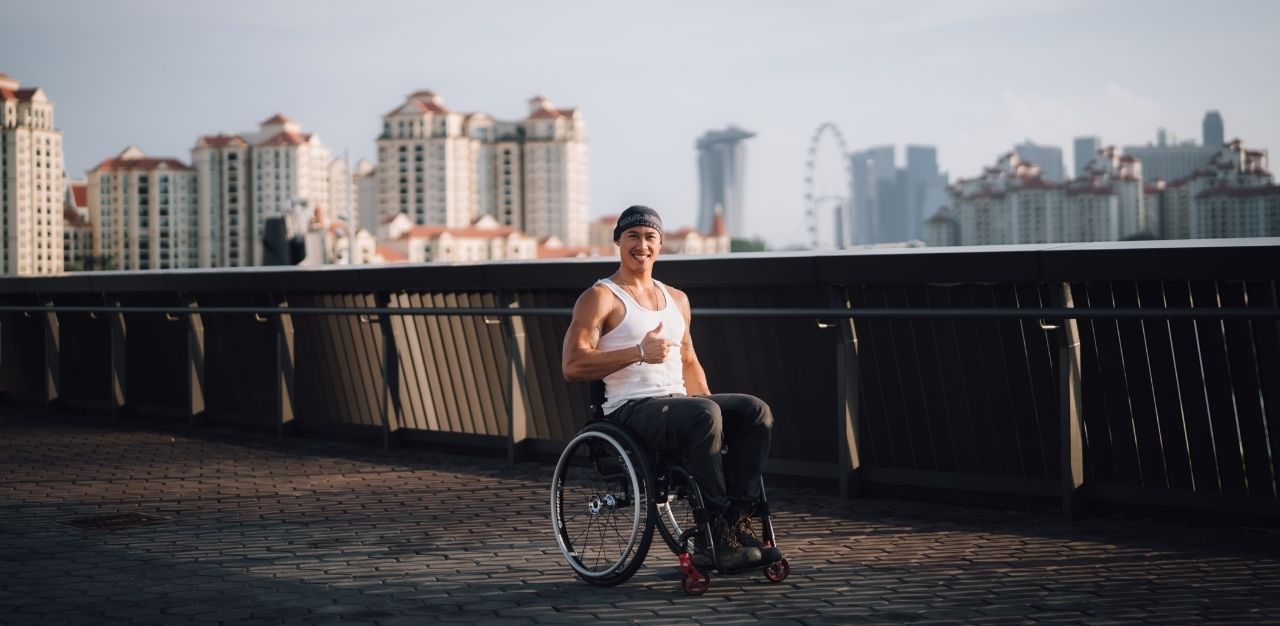
As for Mr Tay, this expedition is just another step in his mission to spread the message of solidarity: “I’m looking forward to organising more and more of these expeditions, and getting more people in the special needs field to open up.”
He continues: “It’s okay to be vulnerable. The most important thing is to embrace insecurities and vulnerability. Just be yourself, because there are always people out there willing to journey with you. You’re not alone… Doing an expedition like this has a special meaning. It’s not about who’s going the furthest or the fastest, it’s [about] doing it together.”
“I want to spread the message of oneness,” he says. “It’s so important for us to see others beyond material looks and appearances, and have the perspective that we are one.”
If the public wishes to support the campaign and SPD, they can donate or share about the campaign here.
Join the conversations on TheHomeGround Asia’s Facebook and Instagram, and get the latest updates via Telegram.


